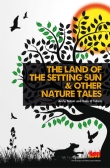Environmental Studies (Second Edition)
Book Details
Based on the latest UGC syllabus, the second edition of Environmental Studies has been thoroughly revised and updated. It discusses the various types of natural resources and the problems faced in conserving them and the effective management of resources for sustainable lifestyles.
The book focuses on the concepts, structure and function of an ecosystem, threats to biodiversity and conservation of biodiversity, causes, effects and control measures of pollution, hazardous effects of human population on environment, and management of environment quality and the several types of pollution. A new chapter “Fieldwork” has been added in this edition.
New to this edition
• Value of biodiversity
• Consumeration and waste products
• Enforcement of environmental legislation
• Human rights and value education
Target Audience
-
Lecturers, Tutors, Graduate students and Undergraduate students of Environmental Sciences and Studies, Social Sciences
Table of Contents
Preface
Preface to the first edition
1 Multidisciplinary Nature of Environmental Studies
1.1 Introduction to Environmental Studies
1.2 Overview of Environment
2 Natural Resources
2.1 Introduction
2.2 Renewable and Non-renewable Resources
2.3 Role of an Individual in Conservation of Natural Resources
2.4 Management of Resources for a Sustainable Lifestyle
3 Ecosystems
3.1 Concepts of an Ecosystem
3.2 Structure and Functions of an Ecosystem
3.3 Flow of Energy in Ecosystems
3.4 Sustenance of Life in an Ecosystem
3.5 Ecological Succession
3.6 Food Chains, Food Webs, and Ecological Pyramids
3.7 Types, Characteristic Features, Structure, and Functions of Ecosystems
3.8 Functions of an Ecosystem
3.9 Degradation of Ecosystems
4 Biodiversity
4.1 Introduction
4.2 Biogeographic Classification of India
4.3 Value of Biodiversity
4.4 Biodiversity at Global, National, and Local Levels
4.5 Biodiversity of India
4.6 Uses of Biodiversity
4.7 India as a Mega-diverse Nation
4.8 Hotspots of Biodiversity
4.9 Threats to Biodiversity
4.10 Endemic Species of India
4.11 Threatened Species
4.12 Conservation of Biodiversity
5. Environmental Pollution
5.1 Introduction
5.2 Pollutants
5.3 Causes, Effects, and Control Measures of Pollution
5.4 Solid Waste Management
5.5 Role of an Individual in Prevention of Pollution
5.6 Pollution Case Studies
5.7 Disaster Management
6. Social Issues and the Environment
6.1 Introduction
6.2 Sustainable Development
6.3 Urban Problems Related to Energy
6.4 Environmental Degradation
6.5 Conservation of Water
6.6 Resettlement and Rehabilitation of People
6.7 Environmental Ethics
6.8 Climate Change
6.9 Greenhouse Effect
6.10 Global Warming
6.11 Acid Rain
6.12 Ozone Layer Depletion
6.13 Nuclear Accidents and Nuclear Holocaust
6.14 Wasteland Reclamation
6.15 Consumerism and Waste Products
6.16 Environment Protection Acts
6.17 Issues Involved in Enforcement of Environmental Legislation
7. Population and the Environment
7.1 Introduction
7.2 Causes of Rapid Population Growth
7.3 Control of Rapid Population Growth
7.4 Consequences of Rapid Population Growth
7.5 Urbanization
7.6 Environment and Human Health
7.7 Human Rights
7.8 Value Education
7.9 HIV/AIDS
7.10 Women and Child Welfare
7.11 Role of Information Technology in Environment and Human Health
7.12 Case Studies
8. Management of the Environment
8.1 Introduction
8.2 Public Awareness
8.3 Management of Environmental Quality
9. Fieldwork
9.1 Visit to a Local Area to Document Environmental Assets: River/Forest/Grassland/Hill/Mountain
Bibliography
Index
About the Author
Keywords
You may also like...
-
 The Land of the Setting Sun & Other Nature Tales
Regular Price 250.00
Special Price 225.00
The Land of the Setting Sun & Other Nature Tales
Regular Price 250.00
Special Price 225.00


